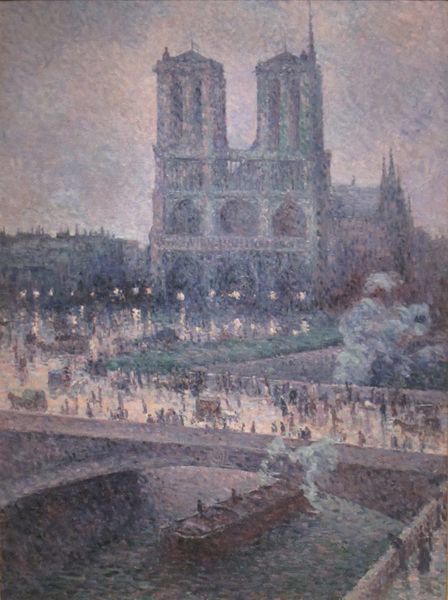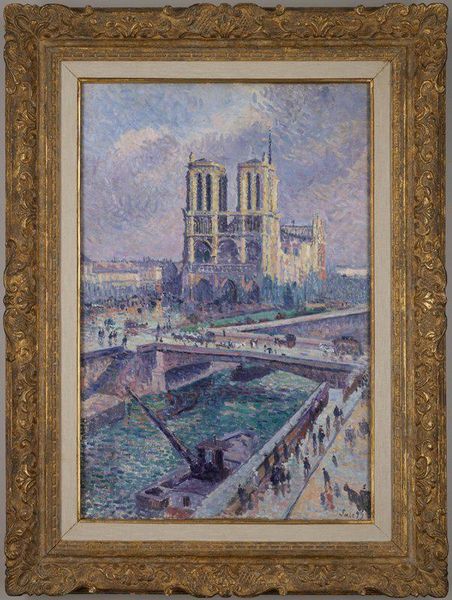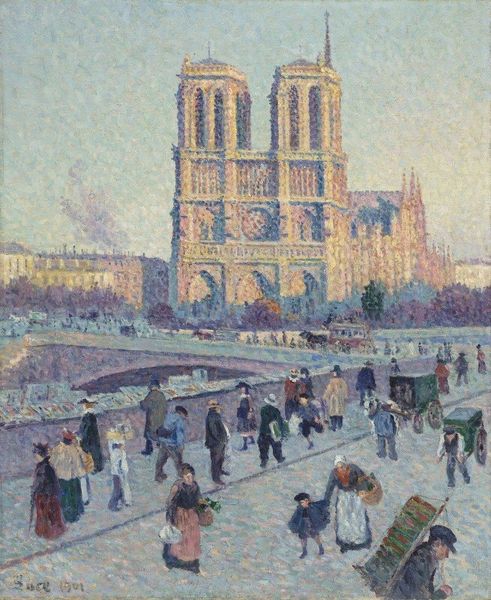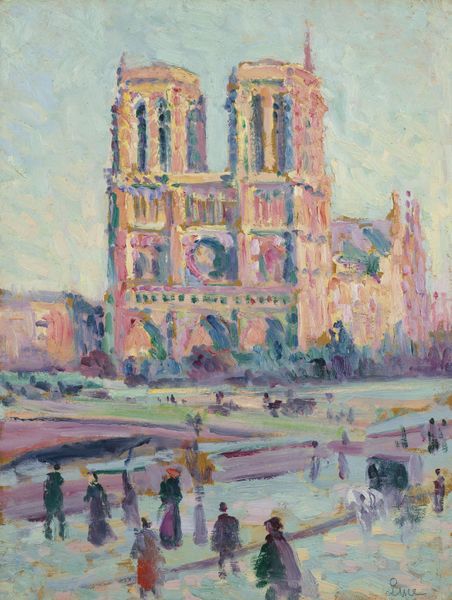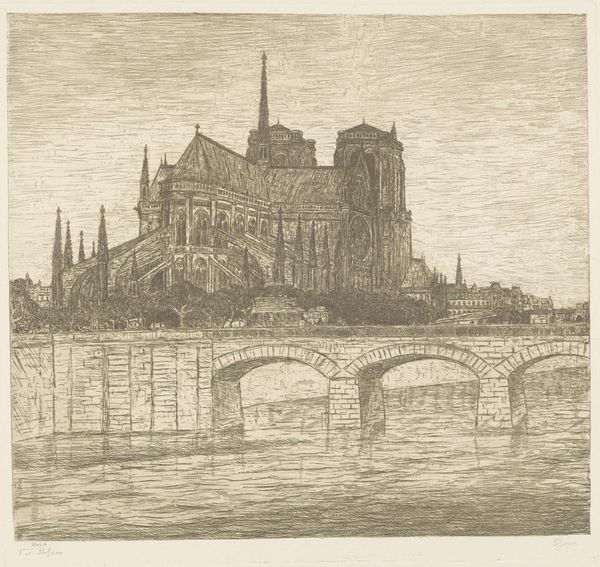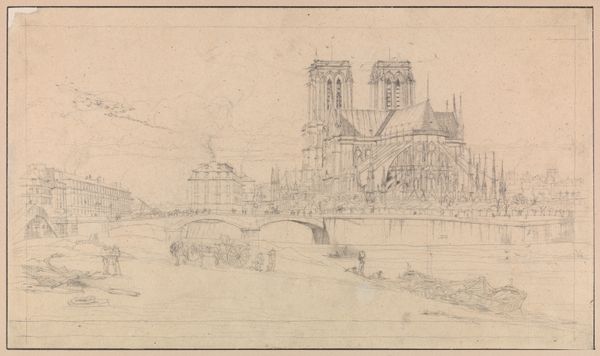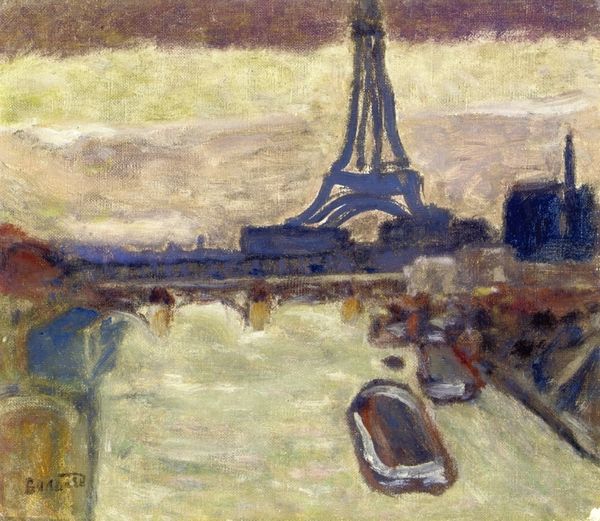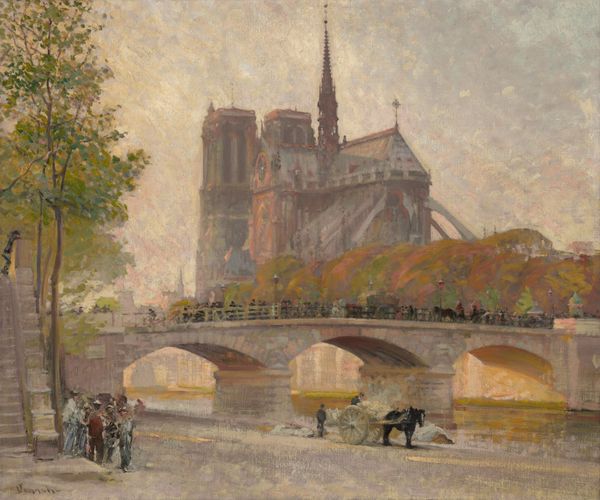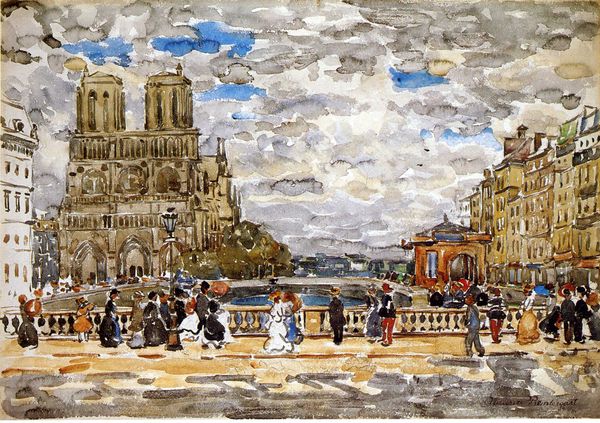
Dimensions: 609 x 50 cm
Copyright: Public domain
Curator: Kuzma Petrov-Vodkin's 1924 painting, "Paris. Notre-Dame," offers a striking view of the iconic cathedral. Editor: It has such a somber, almost brooding presence, doesn’t it? The palette is quite muted, like a charcoal drawing veiled in twilight. Curator: The artist’s interest clearly lies in rendering a mood more than capturing architectural details with complete accuracy. You feel the city's weight and age here. Think about Petrov-Vodkin’s broader context. This was post-World War I Paris, still grappling with the fallout. Editor: Yes, and that melancholy permeates. Notre-Dame is formidable, eternal, but around it swirls a quiet urban scene rendered in subtle strokes of blues and grays, browns and hints of golden light reflecting in the Seine river. I’m particularly drawn to the people dotting the bridge; each a small participant within the larger, somewhat cold context of Parisian infrastructure. Curator: Note too the slightly elevated perspective, as if the artist is viewing the scene from above—observing but detached, and not quite present. He was living in quite difficult circumstances then, his family facing many privations in post-revolutionary Russia, a certain distance creeps into his observations, or even a kind of longing for stability. Editor: And the river—a flowing vein of the city—leading your eye from the foreground towards that grand edifice. Do you find a similar sensation? There’s something beautiful, in its bleakness, I would not be completely astonished if Vodkin tried to create in a similar state as Impressionists: almost dissolving form into feeling. Curator: An interesting consideration—though Vodkin perhaps lacked the pure optimism that propelled most impressionist palettes. His “spherical perspective,” and distinctive way of structuring space often gave objects within an added dimension. A desire, I think, to capture the totality of what’s available beyond one mere angle. Editor: Right. More totality, less impression. All captured here by oil paint, that seems particularly fitting to capture all gradations that can exist within a gray, almost a monochrome palette. Curator: Absolutely, "Paris. Notre-Dame" feels both grounded in its historical moment, and also reaching toward something beyond the purely representational, reflecting perhaps the complicated psyche of both its creator, and that very iconic monument he immortalizes through that melancholic lens. Editor: A scene from memory or dreams… evoking in me reflections far beyond brick, stone, and river flow.
Comments
No comments
Be the first to comment and join the conversation on the ultimate creative platform.

